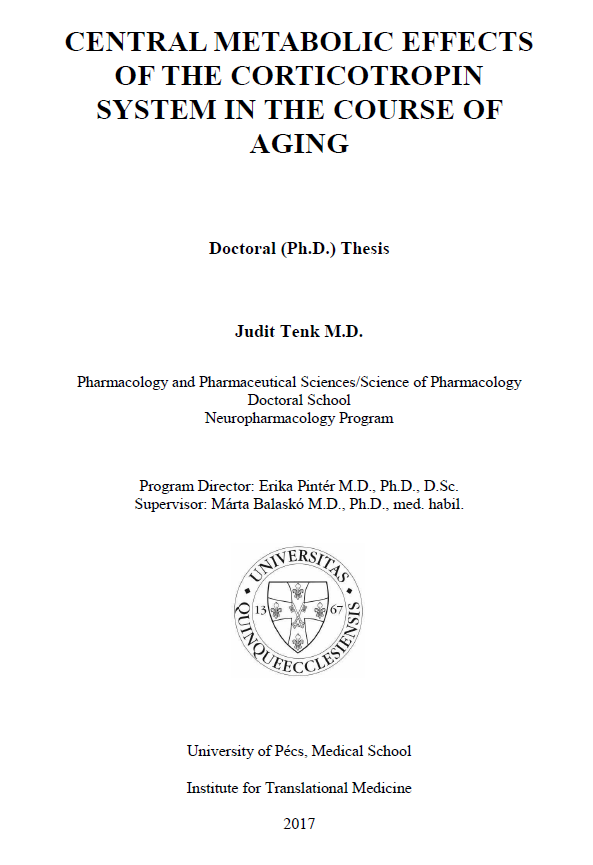Central Metabolic Effects of the Corticotropin System in the Course of Aging
Abstract
During the past decades, prevalence of metabolic disorders increased dramatically in populations all over the world. Both energy excess (e.g. obesity) and deficit (e.g. cachexia, sarcopenia) are important worldwide challenges affecting more and more people.
Due to unprecedented food abundance and technological progress in developed countries, overconsumption of calorie-rich food is combined with sedentary lifestyle, therefore obesity reached epidemic proportions in the modern world. In 2014 1.9 billion adults were overweight and, among them, 600 million were obese all over the world. This prevalence is constantly growing, by 2030 1.35 billion and 573 million individuals are projected to be overweight and obese [Kelly et al. 2008]. It is well-known, that obesity increases risk of a number of medical conditions including type 2 diabetes mellitus, cardiovascular diseases, depression, certain cancers or respiratory disorders.
It is interesting, that having lower or even normal body mass index (BMI) seems to be more harmful in the elderly than being overweight. One of the possible explanations of this phenomenon is the muscle loss (sarcopenia) in the elderly. Aging societies and increasing expected lifespan contribute to the rising occurence of aging anorexia leading to cachexia and/or sarcopenia. According to estimations more than 5-13% of people over 70 years of age are affected by sarcopenia. This common clinical problem is the precursor of several severe health problems, such as frailty, fractures, functional/physical disabilities, poor quality of life and premature death.
The above mentioned abnormalities present considerable public health burdens with serious impact on health status and health cost. That makes it essential to achieve deeper understanding regarding the functions and mechanisms of healthy and pathological energy processes and it underlines the importance of research aimed at age-related alterations in energy metabolism.

